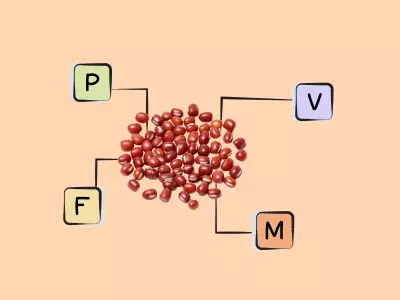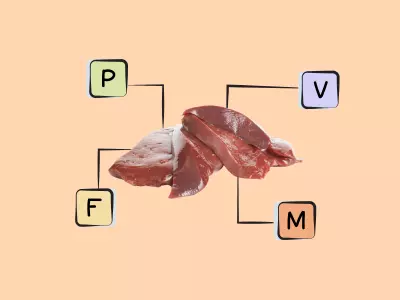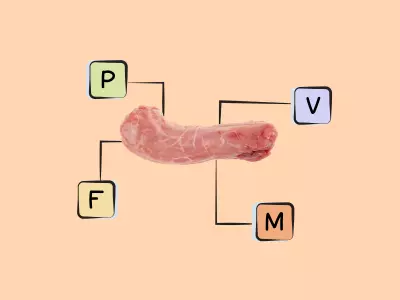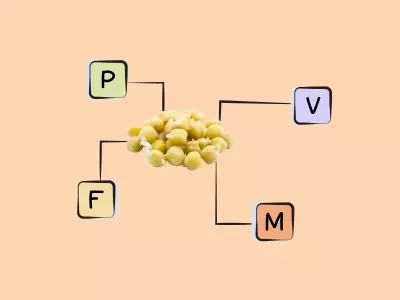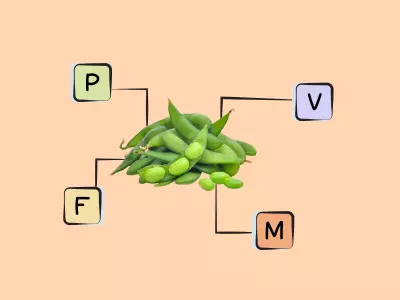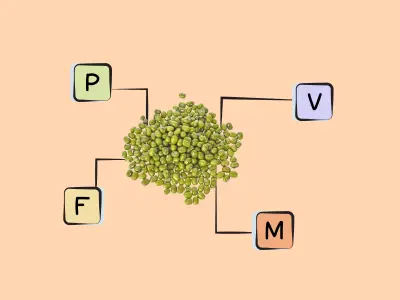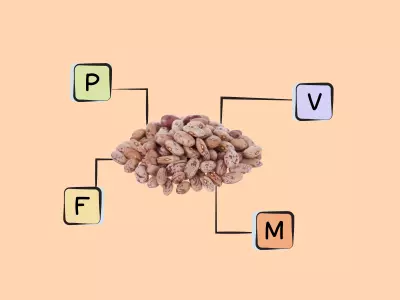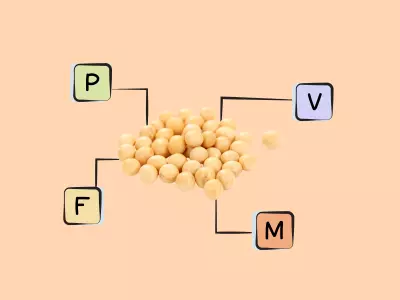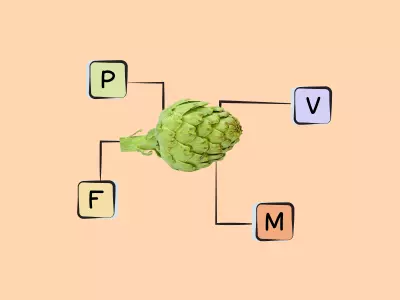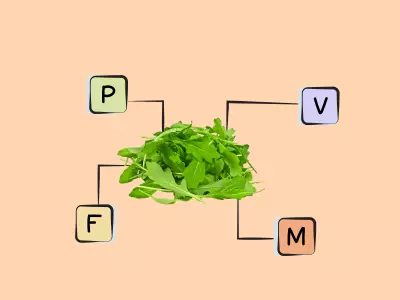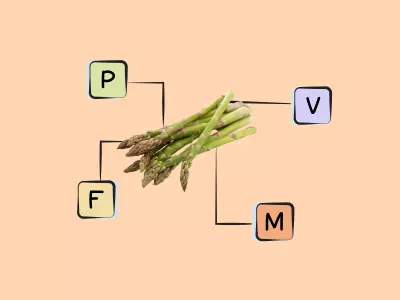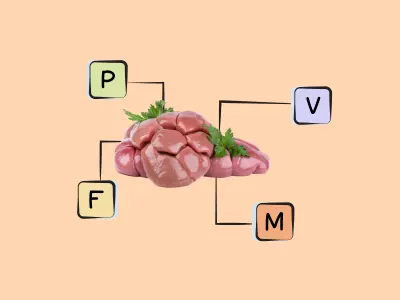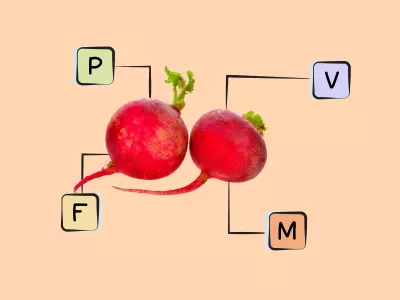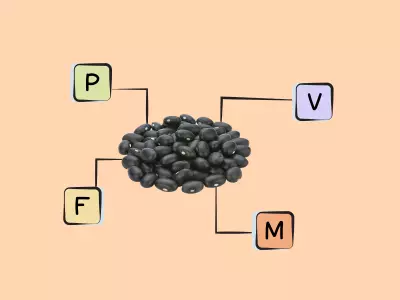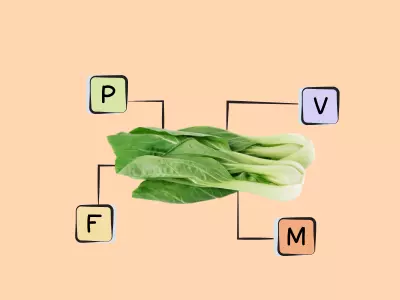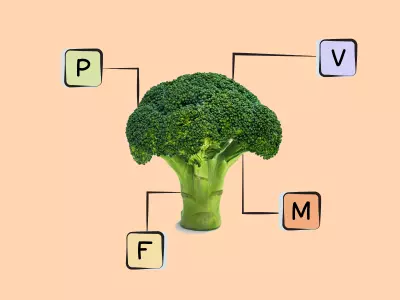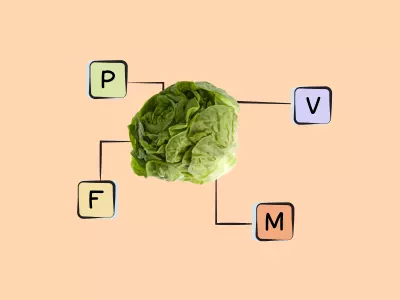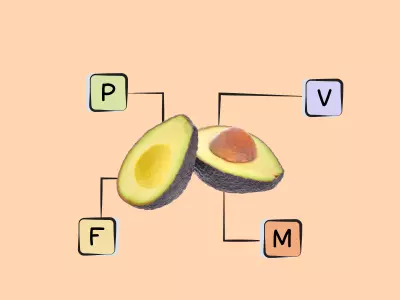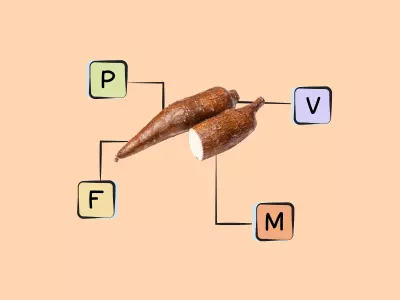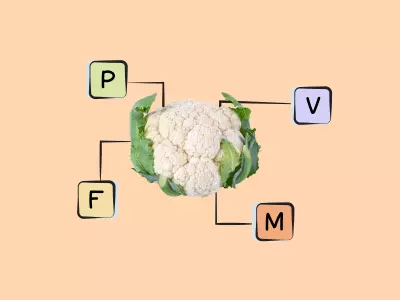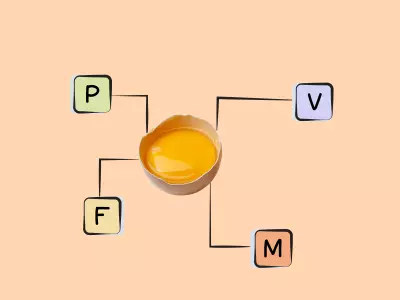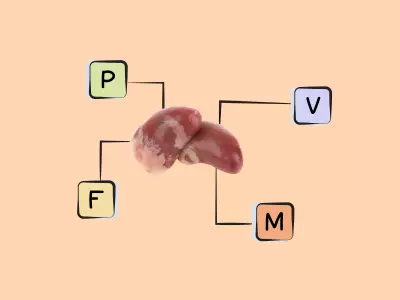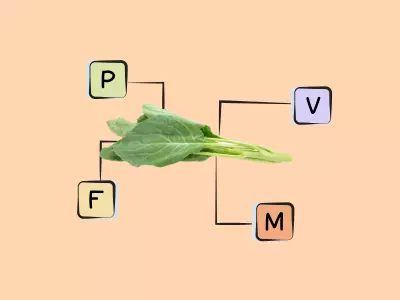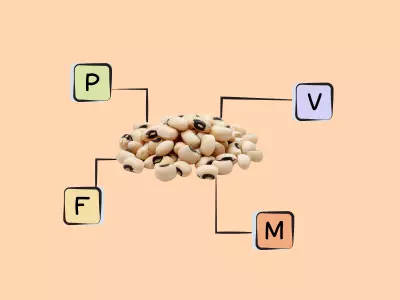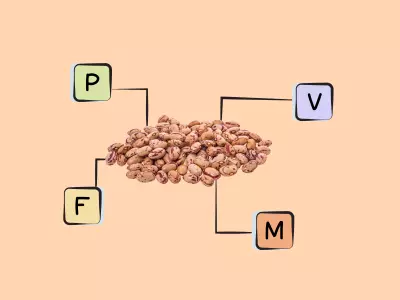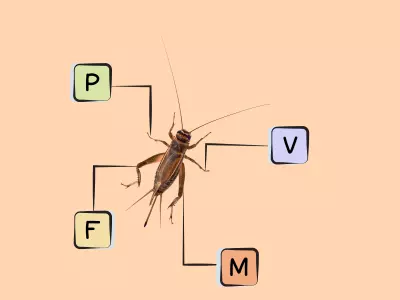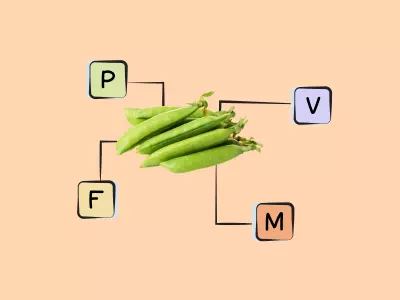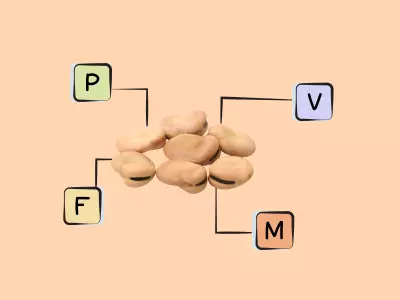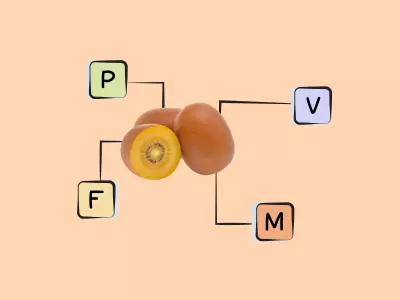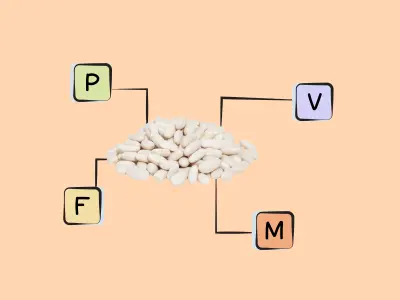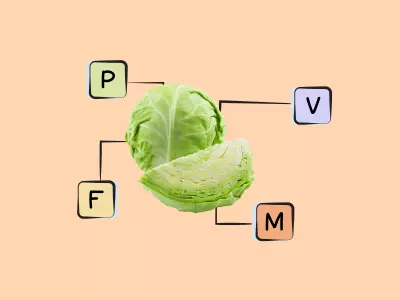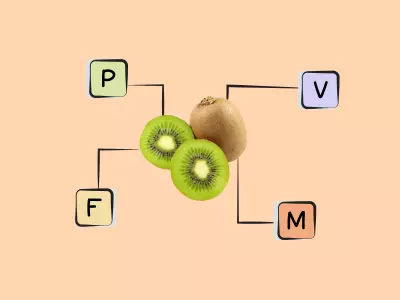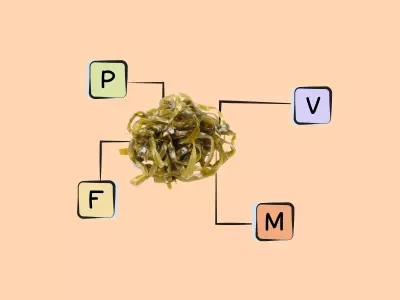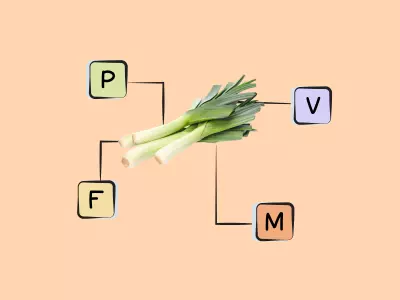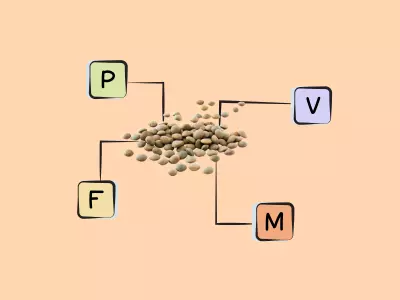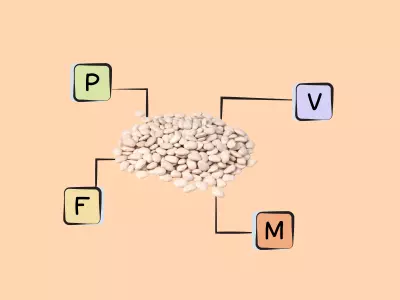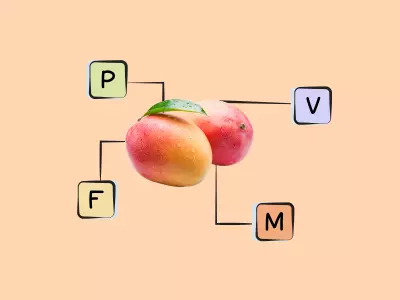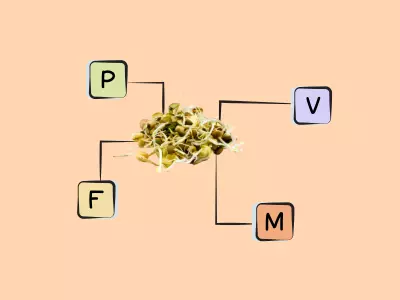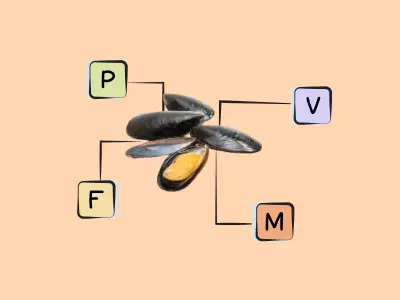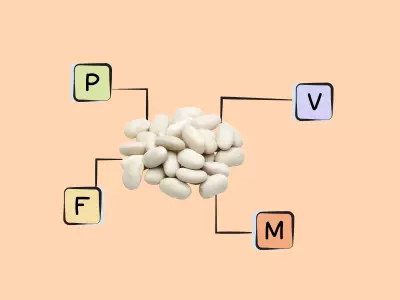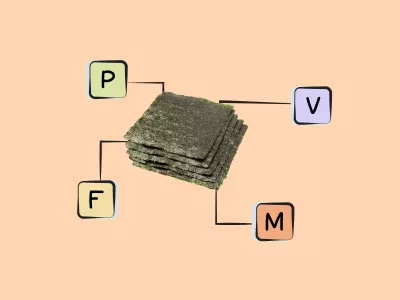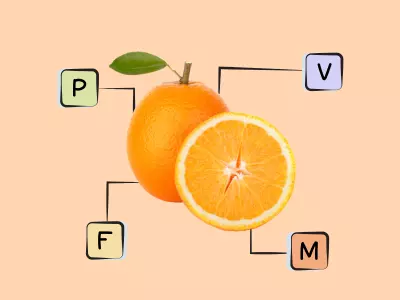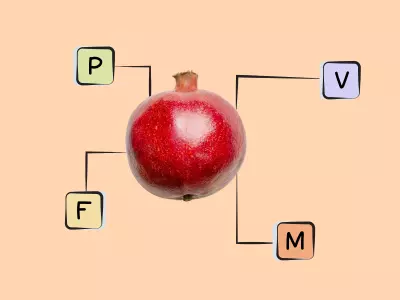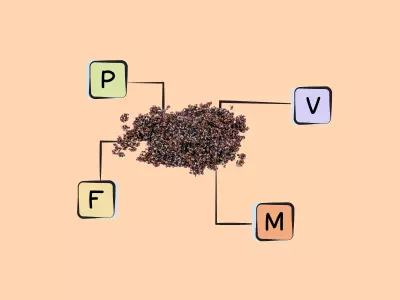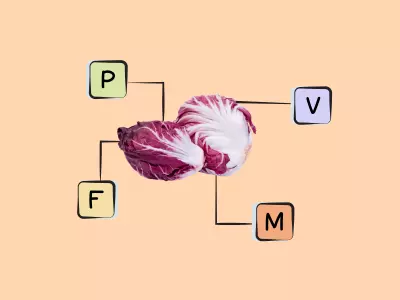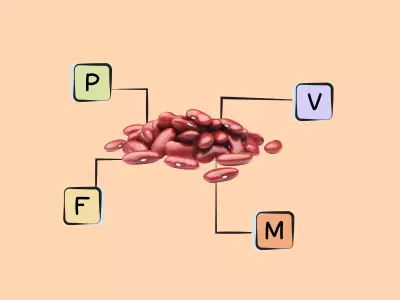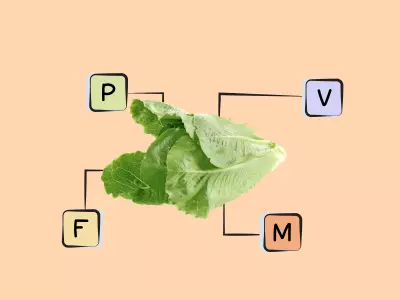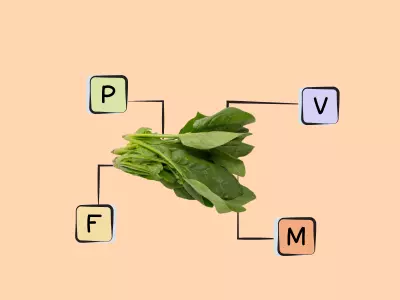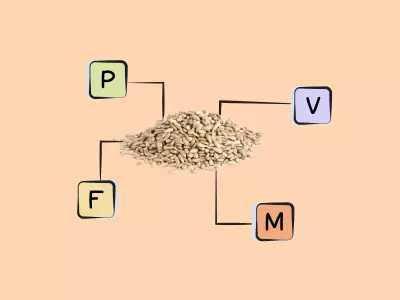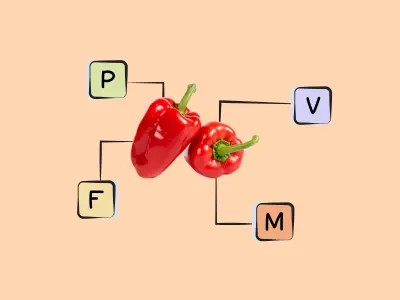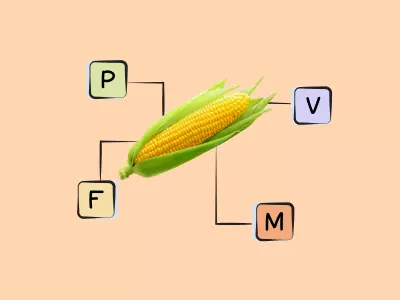Key Takeaways (expand)
- Folate is also known as vitamin B9, and includes both naturally occurring dietary folates as well as a synthetic form, called folic acid.
- Although folic acid is technically more bioavailable than natural forms of folate, it requires conversion into its active form (5-methyltetrahydrofolate) before being usable; this conversion is very inefficient for some people, particularly carriers of the C677T MTHFR polymorphism.
- Like other B vitamins, folate is used for producing healthy blood cells, forming important genetic material (like DNA), and promoting cellular growth and function.
- In the form of folate coenzymes, folate helps facilitate the transfer of one-carbon units—giving it wide-ranging roles in metabolizing DNA and RNA, assisting in methylation reactions, and breaking down amino acids.
- Through its role in DNA methylation, folate plays a role in regulating gene expression and cell differentiation.
- Folate works in conjunction with vitamins B6 and B12 to regulate the metabolism of homocysteine—an amino acid that affects inflammation and cardiovascular disease risk.
- Getting enough folate is particularly critical during pregnancy, due to the body’s rapid creation of new cells and DNA. Inadequate folate during this time can increase the risk of fetal growth and development problems, neural tube defects, cleft lip and cleft palate, and cardiovascular malformations.
- Folate is needed to support other components of reproductive health as well, including the development of sperm cells, and the multiple phases of cells within ovaries (oocytes) spanning from ovum maturation to fetal growth.
- Evidence suggests folate can protect against cardiovascular disease, including reducing the risk of heart attacks and stroke.
- Insufficient folate intake could increase the risk of certain cancers, likely due to its important role in synthesizing and methylating DNA and RNA.
- Folate may also help protect against cognitive and nervous system disorders, with low levels being linked to age-related cognitive dysfunction (including dementia and Alzheimer’s disease).
- Folate deficiency can occur not only from low dietary intake, but also malabsorption disorders, alcoholism, certain genetic variations (particularly in the MTHFR gene), or conditions involving rapid rates of cell division and metabolism (such as pregnancy and cancer).
- When folate deficiency occurs, it causes megaloblastic anemia (where red blood cells are large and underdeveloped), leading to impaired oxygen carrying capacity and causing symptoms like fatigue, pale palms and mucus membranes, shortness of breath, and weakness.
Table of Contents[Hide][Show]
How Does Vitamin B9 (Folate) Affect Health and Disease?+−
- Vitamin B9 (Folate) and Pregnancy
- Vitamin B9 (Folate) and Cardiovascular Disease
- Vitamin B9 (Folate) and Cancer
- Vitamin B9 (Folate) and Neurodegenerative Disease
- Vitamin B9 (Folate) and Obesity
- Vitamin B9 (Folate) and Type 2 Diabetes
- Vitamin B9 (Folate) and Fatigue
- Vitamin B9 (Folate) and Chronic Kidney Disease
- Vitamin B9 (Folate) and Restless Leg Syndrome
- Vitamin B9 (Folate) and Inflammatory Bowel Disease
- Vitamin B9 (Folate) and Vitiligo
- Vitamin B9 (Folate) and Inflammation
- Folate Metabolism Disorders
- What Are the Symptoms of Vitamin B9 (Folate) Deficiency?
- How Much Vitamin B9 (Folate) Do We Need?
- What Are the Best Food Sources of Vitamin B9 (Folate)?
- What Are Good Food Sources of Vitamin B9 (Folate)?
Folate, also called folic acid or vitamin B9, is an oft-discussed but commonly misunderstood B vitamin. “Folate” is a generic term that refers to both naturally occurring dietary folates as well as a synthetic version called folic acid, which is used in fortified food and supplements due to its enhanced stability during processing and storage.
Folate was first discovered in 1931, when a researcher named Lucy Wills identified a substance present in liver and yeast that could prevent rats and pregnant humans from developing anemia. Over the next decade, this nutrient was given a number of different names (including vitamin M, Lactobacillus casei factor, factor ‘S,’ vitamin BC, and norit eluate factor!) before finally being termed folic acid—deriving from the Latin word for leaf, folium, and referring to its initial isolation from spinach.
Like other B vitamins, folate is needed for producing healthy blood cells; it’s also required for healthy cell growth and function, and for making important genetic material like DNA.
Natural food sources of folate include liver and other organ meats, green leafy vegetables (like spinach and lettuce), asparagus, avocados, Brussels sprouts, legumes (including peas and lentils), eggs, beets, citrus fruits, orange juice, strawberries, pomegranates, broccoli, nuts, and seeds. Many processed grain products like cornmeal and breakfast cereals are also fortified with folic acid.
Ready to Make Healthy Eating Feel Effortless?

Join the FREE 90-day Nutrivore90 Challenge and build lasting habits with no food rules, no guilt—just real progress.
- Weekly downloads, journal prompts, and reflection tools—all completely free.
- Focus on nutrient density, not restriction
- Nutrivore90 starts January 5th, 2026!
What Are the Biological Roles of Vitamin B9 (Folate)?
Unlike some of the B vitamins, which can have hundreds of functions in the body, the biochemical use of folate coenzymes is solely to mediate the transfer of “one-carbon units”—which means shuttling one carbon molecule between carriers. But, that’s far from a small job: it means that folate serves a major role in metabolizing nucleic acid precursors (including DNA and RNA), breaking down amino acids, and assisting in methylation reactions.
More specifically, folate coenzymes are involved in nucleic acid metabolism via two pathways: one, through synthesizing DNA from thymidine and purine precursors, and two, through synthesizing methionine from homocysteine (methionine, in turn, is used for synthesizing a methyl group donor called S-adenosylmethionine (SAM) that’s required for most methylation reactions, including for DNA, RNA, phospholipids, and proteins). Through its role in DNA methylation, folate is ultimately involved in regulating gene expression and cell differentiation. Meanwhile, folate coenzymes are also needed for metabolizing several important amino acids: cysteine, methionine, serine, glycine, and histidine.
How Does Vitamin B9 (Folate) Interact with Other Nutrients?
Folate has some important nutrient interrelationships, too. For example, folate works hand-in-hand with vitamins B6 (pyridoxine) and B12 (cobalamin) to regulate the metabolism of homocysteine, which is directly related to inflammation and cardiovascular disease risk. More specifically, homocysteine metabolism occurs through two different pathways, one of which requires both folate and vitamin B12 as cofactors (the methionine synthase pathway), and the other of which requires additional vitamin B6-dependent enzymes to convert homocysteine to cysteine. If the status of any of these nutrients is suboptimal, these pathways can be negatively impacted—potentially leading to elevated levels of homocysteine in the body.
Folate also functions with another B-complex vitamin, riboflavin (vitamin B2), in a less well-recognized fashion involving the MTHFR pathway. Vitamin B2 (riboflavin) is a precursor for a coenzyme called flavin adenine dinucleotide, which is required for MTHFR enzyme activity—including metabolizing folate into its active form, 5-methyltetrahydrofolate (which is needed for forming methionine from homocysteine). In people homozygous for the C677T polymorphism in the MTHFR gene (which causes lower MTHFR activity and higher homocysteine concentrations), the impact of riboflavin on folate metabolism and homocysteine reduction is particularly significant.
Interestingly, folate also interacts with vitamin C: vitamin C can limit the degradation of folic acid and folate coenzymes in the stomach, in turn improving folate bioavailability and absorption. In fact, one trial found that combining vitamin C with active folate (5-methyltetrahydrofolic acid) led to higher serum folate levels compared to folate supplementation alone. Certain folate-related genetic variations also appear to influence the degree to which vitamin C impacts folate metabolism.
Are There Any Drug Interactions with Vitamin B9 (Folate)?
In addition, vitamin B9 (folate) can interact with certain drugs, including some very common ones.
High doses of nonsteroidal anti-inflammatory drugs (NSAIDs), like ibuprofen and aspirin, can interfere with folate metabolism (although regular lower-dose use of NSAIDS doesn’t appear to harm folate status).
Cholesterol-lowering drugs (especially cholestyramine and colestipol) and long-term use of some anticonvulsants (especially phenytoin, phenobarbital, and primidone) have likewise been linked to impaired folate absorption.
And, a folate antagonist called methotrexate (which is commonly used to treat rheumatoid arthritis and psoriasis), as well as some anti-folate molecules used for cancer therapy (including pemetrexed, pralatrexate, aminopterin, and raltitrexed), can lead to symptoms of severe folate deficiency. When this happens, it can typically be treated with folic acid or folinic acid (a folic acid derivative) supplementation.
What Are the Different Forms of Vitamin B9? (Folate vs. Folic Acid)
Lastly, it’s important to understand the difference between the natural forms of folate and its synthetic form, folic acid. Food-derived folates mainly exist in the polyglutamyl form (bound to several glutamate amino acids), whereas folic acid is a monoglutamate (bound to just one glutamate moiety).
When it comes to bioavailability, this gives folic acid a major leg up: dietary folate must go through a two-step process to be absorbed in the gut, while folic acid is absorbed much more readily (it’s estimated that folic acid is absorbed at a rate of 85-100%, in contrast to 50-60% for folate from food!). However, folic acid is unusable by the body until being converted into its active form (5-methyltetrahydrofolate), and this conversion process can vary among different people. In particular, homozygous (two copy) carriers of the C677T MTHFR polymorphism have up to a 70% reduction in their ability to convert folic acid into 5-methyltetrahydrofolate.
Natural folates, by contrast, occur in many chemical forms, including the active form; so, while some food folate will need to go through the same series of chemical reactions as folic acid before it’s active in the body, some can be converted in fewer steps, and some does not require conversion at all. As a result, getting folate from foods, rather than vitamin supplements, is still a win!
Everything You Need to Jump into Nutrivore TODAY!
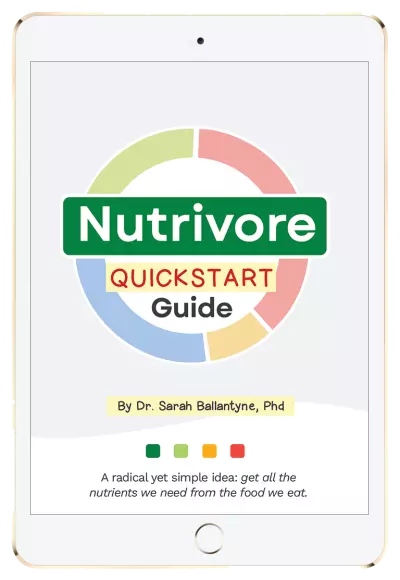
Nutrivore Quickstart Guide
The Nutrivore Quickstart Guide e-book explains why and how to eat a Nutrivore diet, introduces the Nutrivore Score, gives a comprehensive tour of the full range of essential and important nutrients!
Plus, you’ll find the Top 100 Nutrivore Score Foods, analysis of food groups, practical tips to increase the nutrient density of your diet, and look-up tables for the Nutrivore Score of over 700 foods.
Buy now for instant digital access.
How Does Vitamin B9 (Folate) Affect Health and Disease?
Vitamin b9 (folate) is particularly important during pregnancy, when folate demands increase due to the rapid creation of new cells and DNA. Along with helping protect against fetal development problems, folate can support cardiovascular health, potentially protect against certain cancers, and reduce the risk of cognitive and neurological disorders later in life.
Vitamin B9 (Folate) and Pregnancy
Getting enough folate is especially critical during pregnancy and lactation. As with several other B vitamins, the need for folate goes up as demand to create new cells and DNA increases, and this is especially true during fetal growth and development. During pregnancy, adequate folate is necessary for preventing cardiovascular malformations, orofacial clefts like cleft lip and cleft palate, and neural tube defects—congenital abnormalities that occur from the failure of neural tube (which becomes the spinal cord, spine, brain and skull during development) closure during the first month of pregnancy (and which include encephalocele, anencephaly, and spina bifida). This is why folic acid supplements are highly recommended during early pregnancy, or even prior to conception, and why folate is always included in prenatal multivitamins.
Similarly, higher doses of folic acid or folate may help prevent low birth weight (and subsequent higher mortality risk) among infants. And, daily folate supplementation of 600 micrograms (mcg), both before and during pregnancy, has been associated with a reduced risk of autism spectrum disorders when both the mother and child carry the C677T MTHFR variant.
A 2018 systematic review and meta-analysis found that compared to no supplementation, supplementation with folic acid during pregnancy was associated with significantly lower (22%) odds of preeclampsia, a high blood pressure condition that can occur with pregnancy. Similarly, low plasma folate levels are associated with higher miscarriage risk, while greater folate intake during pregnancy is associated with lower miscarriage risk. And, a 2008 population-based study found that folic acid supplementation was associated with a 19% lower risk of placental abruption, a fairly uncommon pregnancy complication where the placenta detaches from the uterus.
Folate is also important for other elements of reproductive health, including spermatogenesis (the origin and development of sperm cells) and the quality, maturation, implantation, placentation, and eventually fetal growth of oocytes (a cell within the ovaries that become an ovum, or egg).
Vitamin B9 (Folate) and Cardiovascular Disease
Folate may also play a role in protecting against cardiovascular disease. Diets rich in folate have been associated with a lower risk of heart disease, heart attacks, and stroke, and in observational studies, people consuming the most dietary folate have shown up to a 55% lower risk of experiencing an acute coronary event (like a heart attack) compared to people consuming the least dietary folate. This could be due in part to folate’s homocysteine-lowering abilities: numerous studies have linked elevated homocysteine levels to greater cardiovascular disease risk, possibly because of its effects on vasodilation, arterial wall thickening, and blood clotting. However, in clinical trials, folate supplementation has only demonstrated benefit for primary stroke prevention.
That being said, some research has also shown that folic acid supplementation can reduce the development of atherosclerosis, a component of cardiovascular disease; more specifically, it’s been shown to reduce the measurement of carotid intima-media thickness (a marker for early atherosclerosis and predictor for future cardiovascular events) among people at high risk of cardiovascular disease or who have chronic kidney disease.
Vitamin B9 (Folate) and Cancer
Across a number of studies, low folate status has been associated with an increased risk of cancer, possibly due to folate’s role in DNA and RNA synthesis and methylation. In the context of low folate intake, genome instability chromosome breakage become more likely—both of which often characterize cancer development.
Colorectal cancer, in particular, has been linked to folate intake, with studies showing a modest protective effect of dietary folate (some pooled estimates suggest a 2% lower risk of colorectal cancer for every 100 microgram increase of folate intake per day)—however, this protective effect seems more prominent in men than women. Interestingly, while folate appears to reduce the risk of developing colorectal cancer in the first place, some research has raised concern that high-dose folic acid supplementation could spur tumor growth in patients with already-established cancer—although not all studies have confirmed this, including several large randomized controlled trials that found no added risk of colorectal cancer recurrence in people taking as high as 1000 micrograms daily of folate for at least two years.
A 2019 case-cohort study of B-vitamin intake and cancer risk in women found that higher folate intake was associated with a 48% lower risk of endometrial cancer and a 61% lower risk of ovarian cancer. And, a 2020 systematic review and meta-analysis of 24 case-control studies and randomized clinical trials found a strong correlation between folate deficiency and risk of both cervical intraepithelial neoplasia (abnormal changes in the cells lining the cervix) and cervical cancer. And, in women, alcohol intake may mediate a relationship between folate and breast cancer risk, with studies tending to show a protective effect of folate consumption in women who regularly consume alcohol (but not non-drinkers or minimal drinkers!).
Some research has also linked folate intake to bladder cancer risk. A 2022 systematic review and meta-analysis of 19 studies found that people with the highest versus lowest intake of folate had a 22% lower risk of a type of bladder cancer called urothelial carcinoma. A dose-response analysis further showed that every 100 μg per day increase in folate intake was associated with a 8% drop in invasive cancer risk! Along with confirming an overall protective effect of folate on bladder cancer (the highest quartile of folate intake from food corresponding with a 54% reduced risk), a 2005 case-control analysis found some noteworthy interactions between folate intake, smoking, and bladder cancer risk. Specifically, compared to non-smokers with high folate intake, heavy smokers with low dietary folate intake had a 2.31-fold increased risk of bladder cancer, while for heavy smokers with high folate intake, the risk increase was reduced to 1.31-fold. Similarly, light smokers with low folate intake had a 1.41-fold higher bladder cancer risk than non-smokers with high folate intake! There’s also evidence that certain polymorphisms, especially in the methylene-tetrahydrofolate reductase (MTHFR) and methionine synthase (MS) genes, interact with low folate intake to increase bladder cancer risk.
Additional research, albeit limited, has shown a potential link between chronically low folate intake and elevated risk of brain, pancreatic, and esophageal cancers, as well as factors that increase esophageal cancer risk (including acid reflux and Barrett’s esophagus).
Vitamin B9 (Folate) and Neurodegenerative Disease
Due to folate’s role in brain development and the nervous system, low folate status has been linked to age-related cognitive dysfunction (ranging from mild impairments to severe dementia and Alzheimer’s). In elderly women, long-term low folate status (as indicated by red blood cell folate concentrations) tends to be lower in Alzheimer’s patients than in healthy individuals. But, the results of controlled trials have been mixed regarding whether folate supplementation itself (versus folate as part of a larger B-vitamin intervention) can help protect against cognitive dysfunction. More research here is needed!
Vitamin B9 (Folate) and Obesity
Interesting links exist between folate and obesity! A 2023 cross-sectional study found that folate levels were inversely associated with visceral fat area and body fat percentage. A 2023 meta-analysis of nine randomized clinical trials likewise found that folate supplementation (in the form of folic acid) significantly improved BMI in certain populations, particularly in people with homocysteine levels of at least 15 μmol/L and in women with PCOS. Other research has shown that compared to people of normal body weight, overweight and obese individuals tend to have lower serum folate levels and lower dietary folate intake. In a 2020 case-control study, participants who were overweight or obese had 12% lower folate intake and 8.5% lower serum folate levels compared to controls, with lower serum levels also correlating with body fat percentage and waist circumference.
Vitamin B9 (Folate) and Type 2 Diabetes
Folate may be beneficial for both the prevention and management of type 2 diabetes! A 2021 systematic review and dose-response meta-analysis of 24 randomized controlled trials, including both diabetic and non-diabetic participants, found that folic acid supplementation significantly benefits glycemic control—specifically, reducing fasting blood glucose, fasting insulin, and HOMA-IR. Multiple studies have also found inverse relationships between folate intake and type 2 diabetes risk. For example, a 2021 analysis of National Health and Nutrition Examination Survey data found that compared with the lowest quartile of folate intake, those in the highest quartile had a 35% lower risk of diabetes.
Vitamin B9 (Folate) and Fatigue
Folate has been linked to fatigue disorders, including chronic fatigue syndrome, although more research is needed!
Vitamin B9 (Folate) and Chronic Kidney Disease
Research has linked low folate intake and blood levels with chronic kidney disease, although this relationship is sometimes confounded by the fact that kidney dialysis removes folate from the body. However, folate may also be causally protective here: a 30-year followup study published in 2022 found that after after adjusting for potential confounders, there was a significant L-shaped association between dietary folate intake during young adulthood and chronic kidney disease incidence later in life. Compared with the lowest quintile of total folate intake, those in the highest three quintiles had between a 61 – 66% lower risk of developing chronic kidney disease!
A 2016 randomized controlled trial found that the addition of folic acid to the medication enalapril (an ACE inhibitor) significantly delayed the progression of chronic kidney disease among patients with mild to moderate forms of the disease. A 2024 study also found a protective effect of dietary folate intake on all-cause mortality in chronic kidney disease patients. During a median follow-up of 11.1 years, participants in the two highest quartiles of food folate intake (compared to the first quartile of intake) had a 21 – 26% lower risk of all-cause mortality. Interestingly, there was no protective association seen from synthetic folate intake. And, serum unmetabolized folic acid was positively associated with all-cause mortality!
Vitamin B9 (Folate) and Restless Leg Syndrome
Folate deficiency has been linked to restless leg syndrome, and some research has shown that folate supplementation can help alleviate symptoms of this condition. More research is needed!
Vitamin B9 (Folate) and Inflammatory Bowel Disease
Inflammatory bowel disease has shown association with folate levels and intake, although more research is needed to establish causation. For example, a 2017 meta-analysis found that the average serum folate levels in patients with inflammatory bowel disease was significantly lower than that of control patients.
Vitamin B9 (Folate) and Vitiligo
Especially in conjunction with other nutrients (particularly vitamin B12 and ascorbic acid), folate has been shown effective for helping treat vitiligo, an autoimmune disorder that causes loss of skin pigmentation.
Vitamin B9 (Folate) and Inflammation
A number of studies have shown a beneficial effect of folate on inflammatory markers. A 2019 systematic review and meta-analysis of randomized controlled trials found that folic acid supplementation can significantly lower serum levels of C-reactive protein, which is produced by the liver in response to inflammation; this effect was particularly pronounced in women and in patients with type 2 diabetes. A 2021 systematic review and meta-analysis of randomized controlled trials echoed this finding, showing that compared to placebo, folic acid supplementation could improve inflammation by lowering serum concentrations of C-reactive protein.
Folate Metabolism Disorders
Some genetic disorders also affect the metabolism and transport of folate, and can be treated with high doses of the folic acid derivative folinic acid. These disorders include hereditary folate malabsorption (which affects gastrointestinal folate absorption, as well as folate transport into the brain), Cerebral Folate Deficiency syndrome (which involves low levels of folate coenzymes in the cerebrospinal fluid, even when blood levels are normal), and dihydrofolate reductase deficiency (which is a deficiency of an enzyme needed for reducing dihydrofolic acid to tetrahydrofolic acid).
Didn’t know folate was this amazing? Maybe your friends will enjoy this too!
What Are the Symptoms of Vitamin B9 (Folate) Deficiency?
Folate deficiency is usually caused by dietary insufficiency, but it can also result from:
- malabsorption disorders (like Crohn’s disease, ulcerative colitis, and celiac disease),
- heavy alcohol drinking (due to reduced folate absorption), and
- smoking (which has been linked with low folate status—according to some research, 15% lower levels on average among smokers compared to non-smokers!).
Conditions involving greater rates of cell division and metabolism—including pregnancy, inflammation, and cancer—likewise increase folate demand and can raise the risk of deficiency. And, certain genetic variations impact folate metabolism and influence a person’s folate status, particularly variations in the MTHFR gene. Individuals homozygous for the C667T variant of this gene typically have folate levels that are 16% lower than non-carriers, even when dietary folate intake is the same!
Both severe folate deficiency and vitamin B12 deficiency can lead to megaloblastic anemia—a form of anemia where the bone marrow produces big, underdeveloped red blood cells due to impaired DNA synthesis and reduced nuclear division. As the anemia progresses, it leads to impaired oxygen carrying capacity within the blood, causing symptoms such as fatigue, pale mucus membranes and palms, weakness, and shortness of breath. Because both folate and vitamin B12 deficiency can cause megaloblastic anemia, and the symptoms in both cases are identical, it’s important to correct the condition with the right nutrient: improperly treating B12-induced anemia with high doses of folate can perpetuate the vitamin B12 deficiency, potentially leading to irreversible brain damage.
When folate deficiency occurs during pregnancy, it can increase the risk of congenital anomalies (birth defects), including neural tube defects.
Want to know the top 25 foods for this awesome nutrient?

The Top 25 Foods for Every Nutrient
The Top 25 Foods for Every Nutrient e-book is a well-organized, easy-to-use, grocery store-friendly guide to help you choose foods that fit your needs of 43 important nutrients while creating a balanced nutrient-dense diet.
Get two “Top 25” food lists for each nutrient, plus you’ll find RDA charts for everyone, informative visuals, fun facts, serving sizes and the 58 foods that are Nutrient Super Stars!
Buy now for instant digital access.
How Much Vitamin B9 (Folate) Do We Need?
The recommended dietary allowance (RDA) for folate is actually represented as “dietary folate equivalents,” or DFE, which incorporate both folate and folic acid. The RDA for dietary folate equivalents for adults is set at 400 micrograms per day (600 micrograms while pregnant, 500 micrograms when breast feeding); alcoholics are advised to consume 600 micrograms daily due to their reduced ability to absorb this vitamin. Scientists are investigating whether people with genetically reduced MTHFR activity might need to consume more folate than the current RDA, but so far, the jury’s still out.
| 0 – 6 months | |||||
| 6 months to < 12 months | |||||
| 1 yr – 3 yrs | |||||
| 4 yrs – 8 yrs | |||||
| 9 yrs – 13 yrs | |||||
| 14 yrs – 18 yrs | |||||
| 19 yrs – 50 yrs | |||||
| 51+ yrs | |||||
| Pregnant (14 – 18 yrs) | |||||
| Pregnant (19 – 30 yrs) | |||||
| Pregnant (31 – 50 yrs) | |||||
| Lactating (14 – 18 yrs) | |||||
| Lactating (19 – 30 yrs) | |||||
| Lactating (31 – 50 yrs) |
Nutrient Daily Values
Nutrition requirements and recommended nutrient intake for infants, children, adolescents, adults, mature adults, and pregnant and lactating individuals.
What Are the Best Food Sources of Vitamin B9 (Folate)?
The following foods have high concentrations of vitamin B9 (folate), containing at least 50% of the recommended dietary allowance per serving, making them our best food sources of this valuable vitamin!
Want to know the top 500 most nutrient-dense foods?

Top 500 Nutrivore Foods
The Top 500 Nutrivore Foods e-book is an amazing reference deck of the top 500 most nutrient-dense foods according to their Nutrivore Score. Think of it as the go-to resource for a super-nerd, to learn more and better understand which foods stand out, and why!
If you are looking for a quick-reference guide to help enhance your diet with nutrients, and dive into the details of your favorite foods, this book is your one-stop-shop!
Buy now for instant digital access.
What Are Good Food Sources of Vitamin B9 (Folate)?
The following foods are also excellent or good sources of vitamin B9 (folate), containing at least 10% (and up to 50%) of the daily value per serving.
Nutrivore Is a Game-Changer—These 5 Free Guides Show You Why
Sign up for the free weekly Nutrivore Newsletter and get 5 high-value downloads—delivered straight to your inbox—that make healthy eating simple and sustainable.

Citations
Expand to see all scientific references for this article.
Apeland T, Mansoor MA, Strandjord RE. Antiepileptic drugs as independent predictors of plasma total homocysteine levels. Epilepsy Res. 2001 Nov;47(1-2):27-35. doi: 10.1016/s0920-1211(01)00288-1.
Arthur RS, Kirsh VA, Rohan TE. Dietary B-Vitamin Intake and Risk of Breast, Endometrial, Ovarian and Colorectal Cancer among Canadians. Nutr Cancer. 2019;71(7):1067-1077. doi: 10.1080/01635581.2019.1597904.
Asbaghi O, Ashtary-Larky D, Bagheri R, Moosavian SP, Nazarian B, Afrisham R, Kelishadi MR, Wong A, Dutheil F, Suzuki K, Alavi Naeini A. Effects of Folic Acid Supplementation on Inflammatory Markers: A Grade-Assessed Systematic Review and Dose-Response Meta-Analysis of Randomized Controlled Trials. Nutrients. 2021 Jul 6;13(7):2327. doi: 10.3390/nu13072327.
Bailey LB, Gregory JF 3rd. Folate metabolism and requirementso. J Nutr. 1999 Apr;129(4):779-82. doi: 10.1093/jn/129.4.779.
Baker PN, Wheeler SJ, Sanders TA, Thomas JE, Hutchinson CJ, Clarke K, Berry JL, Jones RL, Seed PT, Poston L. A prospective study of micronutrient status in adolescent pregnancy. Am J Clin Nutr. 2009 Apr;89(4):1114-24. doi: 10.3945/ajcn.2008.27097.
Barchitta M, Maugeri A, Magnano San Lio R, Favara G, La Mastra C, La Rosa MC, Agodi A. Dietary Folate Intake and Folic Acid Supplements among Pregnant Women from Southern Italy: Evidence from the “Mamma & Bambino” Cohort. Int J Environ Res Public Health. 2020 Jan 19;17(2):638. doi: 10.3390/ijerph17020638.
Bjørklund G, Dadar M, Pen JJ, Chirumbolo S, Aaseth J. Chronic fatigue syndrome (CFS): Suggestions for a nutritional treatment in the therapeutic approach. Biomed Pharmacother. 2019 Jan;109:1000-1007. doi: 10.1016/j.biopha.2018.10.076.
Choi SW, Mason JB. Folate and carcinogenesis: an integrated scheme. J Nutr. 2000 Feb;130(2):129-32. doi: 10.1093/jn/130.2.129.
Crider KS, Yang TP, Berry RJ, Bailey LB. Folate and DNA methylation: a review of molecular mechanisms and the evidence for folate’s role. Adv Nutr. 2012 Jan;3(1):21-38. doi: 10.3945/an.111.000992.
Czeizel AE, Dudás I, Vereczkey A, Bánhidy F. Folate deficiency and folic acid supplementation: the prevention of neural-tube defects and congenital heart defects. Nutrients. 2013 Nov 21;5(11):4760-75. doi: 10.3390/nu5114760.
de Bree A, van Mierlo LA, Draijer R. Folic acid improves vascular reactivity in humans: a meta-analysis of randomized controlled trials. Am J Clin Nutr. 2007 Sep;86(3):610-7. doi: 10.1093/ajcn/86.3.610.
Eskes TK. Open or closed? A world of difference: a history of homocysteine research. Nutr Rev. 1998 Aug;56(8):236-44. doi: 10.1111/j.1753-4887.1998.tb01755.x. Erratum in: Nutr Rev 1998 Oct;56(10):313.
Fatahi S, Pezeshki M, Mousavi SM, Teymouri A, Rahmani J, Kord Varkaneh H, Ghaedi E. Effects of folic acid supplementation on C-reactive protein: A systematic review and meta-analysis of randomized controlled trials. Nutr Metab Cardiovasc Dis. 2019 May;29(5):432-439. doi: 10.1016/j.numecd.2018.11.006.
Faux NG, Ellis KA, Porter L, Fowler CJ, Laws SM, Martins RN, Pertile KK, Rembach A, Rowe CC, Rumble RL, Szoeke C, Taddei K, Taddei T, Trounson BO, Villemagne VL, Ward V, Ames D, Masters CL, Bush AI. Homocysteine, vitamin B12, and folic acid levels in Alzheimer’s disease, mild cognitive impairment, and healthy elderly: baseline characteristics in subjects of the Australian Imaging Biomarker Lifestyle study. J Alzheimers Dis. 2011;27(4):909-22. doi: 10.3233/JAD-2011-110752.
Folate: Fact Sheet for Health Professionals. National Institutes of Health (NIH) Office of Dietary Supplements. 29 Mar 2021.
Frye RE, Sequeira JM, Quadros EV, James SJ, Rossignol DA. Cerebral folate receptor autoantibodies in autism spectrum disorder. Mol Psychiatry. 2013 Mar;18(3):369-81. doi: 10.1038/mp.2011.175.
Fu Y, Zhu Z, Huang Z, He R, Zhang Y, Li Y, Tan W, Rong S. Association between Vitamin B and Obesity in Middle-Aged and Older Chinese Adults. Nutrients. 2023 Jan 17;15(3):483. doi: 10.3390/nu15030483.
Gaskins AJ, Rich-Edwards JW, Hauser R, Williams PL, Gillman MW, Ginsburg ES, Missmer SA, Chavarro JE. Maternal prepregnancy folate intake and risk of spontaneous abortion and stillbirth. Obstet Gynecol. 2014 Jul;124(1):23-31. doi: 10.1097/AOG.0000000000000343.
George L, Mills JL, Johansson AL, Nordmark A, Olander B, Granath F, Cnattingius S. Plasma folate levels and risk of spontaneous abortion. JAMA. 2002 Oct 16;288(15):1867-73. doi: 10.1001/jama.288.15.1867.
Gibson TM, Weinstein SJ, Pfeiffer RM, Hollenbeck AR, Subar AF, Schatzkin A, Mayne ST, Stolzenberg-Solomon R. Pre- and postfortification intake of folate and risk of colorectal cancer in a large prospective cohort study in the United States. Am J Clin Nutr. 2011 Oct;94(4):1053-62. doi: 10.3945/ajcn.110.002659.
Gu Y, Zeng J, Zou Y, Liu C, Fu H, Chang H. Folate Intake and Risk of Urothelial Carcinoma: A Systematic Review and Meta-Analysis of Epidemiological Studies. Nutr Cancer. 2022;74(5):1593-1605. doi: 10.1080/01635581.2021.1973518.
Halsted CH, Villanueva JA, Devlin AM, Chandler CJ. Metabolic interactions of alcohol and folate. J Nutr. 2002 Aug;132(8 Suppl):2367S-2372S. doi: 10.1093/jn/132.8.2367S.
Homocysteine Lowering Trialists’ Collaboration. Dose-dependent effects of folic acid on blood concentrations of homocysteine: a meta-analysis of the randomized trials. Am J Clin Nutr. 2005 Oct;82(4):806-12. doi: 10.1093/ajcn/82.4.806.
Ibiebele TI, Hughes MC, Pandeya N, Zhao Z, Montgomery G, Hayward N, Green AC, Whiteman DC, Webb PM; Study of Digestive Health; Australian Cancer Study. High intake of folate from food sources is associated with reduced risk of esophageal cancer in an Australian population. J Nutr. 2011 Feb;141(2):274-83. doi: 10.3945/jn.110.131235.
Institute of Medicine (US) Standing Committee on the Scientific Evaluation of Dietary Reference Intakes and its Panel on Folate, Other B Vitamins, and Choline. Dietary Reference Intakes for Thiamin, Riboflavin, Niacin, Vitamin B6, Folate, Vitamin B12, Pantothenic Acid, Biotin, and Choline. Washington (DC): National Academies Press (US); 1998.
Jacobson W, Saich T, Borysiewicz LK, Behan WM, Behan PO, Wreghitt TG. Serum folate and chronic fatigue syndrome. Neurology. 1993 Dec;43(12):2645-7. doi: 10.1212/wnl.43.12.2645.
Jacques PF, Bostom AG, Wilson PW, Rich S, Rosenberg IH, Selhub J. Determinants of plasma total homocysteine concentration in the Framingham Offspring cohort. Am J Clin Nutr. 2001 Mar;73(3):613-21. doi: 10.1093/ajcn/73.3.613.
Jafari A, Gholizadeh E, Sadrmanesh O, Tajpour S, Yarizadeh H, Zamani B, Sohrabi Z. The effect of folic acid supplementation on body weight and body mass index: A systematic review and meta-analysis of randomized controlled trials. Clin Nutr ESPEN. 2023 Feb;53:206-213. doi: 10.1016/j.clnesp.2022.11.020.
Jin G, Wang J, Jiang X. Association of folate, vitamin B-12 and vitamin B-6 intake with diabetes and prediabetes in adults aged 20 years and older. Asia Pac J Clin Nutr. 2021;30(1):75-86. doi: 10.6133/apjcn.202103_30(1).0010.
Juhlin L, Olsson MJ. Improvement of vitiligo after oral treatment with vitamin B12 and folic acid and the importance of sun exposure. Acta Derm Venereol. 1997 Nov;77(6):460-2. doi: 10.2340/000155555577460462.
Kim DH, Smith-Warner SA, Spiegelman D, Yaun SS, Colditz GA, Freudenheim JL, Giovannucci E, Goldbohm RA, Graham S, Harnack L, Jacobs EJ, Leitzmann M, Mannisto S, Miller AB, Potter JD, Rohan TE, Schatzkin A, Speizer FE, Stevens VL, Stolzenberg-Solomon R, Terry P, Toniolo P, Weijenberg MP, Willett WC, Wolk A, Zeleniuch-Jacquotte A, Hunter DJ. Pooled analyses of 13 prospective cohort studies on folate intake and colon cancer. Cancer Causes Control. 2010 Nov;21(11):1919-30. doi: 10.1007/s10552-010-9620-8.
Kim YI. Folate: a magic bullet or a double edged sword for colorectal cancer prevention? Gut. 2006 Oct;55(10):1387-9. doi: 10.1136/gut.2006.095463.
Köse S, Sözlü S, Bölükbaşi H, Ünsal N, Gezmen-Karadağ M. Obesity is associated with folate metabolism. Int J Vitam Nutr Res. 2020 Jun;90(3-4):353-364. doi: 10.1024/0300-9831/a000602.
Kronn D, Goldman ID. Hereditary Folate Malabsorption. 2008 Jun 17 [updated 2017 Apr 27]. In: Adam MP, Ardinger HH, Pagon RA, Wallace SE, Bean LJH, Gripp KW, Mirzaa GM, Amemiya A, editors. GeneReviews® [Internet]. Seattle (WA): University of Washington, Seattle; 1993–2022.
Lassi ZS, Salam RA, Haider BA, Bhutta ZA. Folic acid supplementation during pregnancy for maternal health and pregnancy outcomes. Cochrane Database Syst Rev. 2013 Mar 28;(3):CD006896. doi: 10.1002/14651858.CD006896.pub2.
Li Y, Yang A, Wang W, Wang Z, Wang Z, Su X, Zhang L, Yang J, Zhao W, Hao MI. Folic Acid Intake and Folate Status and Risk of Cervical Cancer: A Systematic Review and Meta-Analysis from 20 Independent Case-Control Studies and 4 RCTs. Curr Dev Nutr. 2020 May 29;4(Suppl 2):330. doi: 10.1093/cdn/nzaa044_029.
Lin J, Spitz MR, Wang Y, Schabath MB, Gorlov IP, Hernandez LM, Pillow PC, Grossman HB, Wu X. Polymorphisms of folate metabolic genes and susceptibility to bladder cancer: a case-control study. Carcinogenesis. 2004 Sep;25(9):1639-47. doi: 10.1093/carcin/bgh175.
Liu M, Ye Z, Wu Q, Yang S, Zhang Y, Zhou C, He P, Zhang Y, Nie J, Liang M, Hou FF, Qin X. Folate intake and incident chronic kidney disease: a 30-year follow-up study from young adulthood to midlife. Am J Clin Nutr. 2022 Aug 4;116(2):599-607. doi: 10.1093/ajcn/nqac109.
Liu M, Ye Z, Yang S, Zhang Y, Zhang Y, He P, Zhou C, Hou FF, Qin X. Relationship of dietary intake of food folate and synthetic folic acid intake from fortified foods with all-cause mortality in individuals with chronic kidney disease. Food Funct. 2024 Jan 22;15(2):559-568. doi: 10.1039/d3fo03927g.
Lucock M, Yates Z, Boyd L, Naylor C, Choi JH, Ng X, Skinner V, Wai R, Kho J, Tang S, Roach P, Veysey M. Vitamin C-related nutrient-nutrient and nutrient-gene interactions that modify folate status. Eur J Nutr. 2013 Mar;52(2):569-82. doi: 10.1007/s00394-012-0359-8. Epub 2012 Apr 21.
Mlodzik-Czyzewska MA, Malinowska AM, Chmurzynska A. Low folate intake and serum levels are associated with higher body mass index and abdominal fat accumulation: a case control study. Nutr J. 2020 Jun 4;19(1):53. doi: 10.1186/s12937-020-00572-6.
Molloy AM, Daly S, Mills JL, Kirke PN, Whitehead AS, Ramsbottom D, Conley MR, Weir DG, Scott JM. Thermolabile variant of 5,10-methylenetetrahydrofolate reductase associated with low red-cell folates: implications for folate intake recommendations. Lancet. 1997 May 31;349(9065):1591-3. doi: 10.1016/S0140-6736(96)12049-3.
Montes LF, Diaz ML, Lajous J, Garcia NJ. Folic acid and vitamin B12 in vitiligo: a nutritional approach. Cutis. 1992 Jul;50(1):39-42.
Nilsen RM, Vollset SE, Rasmussen SA, Ueland PM, Daltveit AK. Folic acid and multivitamin supplement use and risk of placental abruption: a population-based registry study. Am J Epidemiol. 2008 Apr 1;167(7):867-74. doi: 10.1093/aje/kwm373.
Pan Y, Liu Y, Guo H, Jabir MS, Liu X, Cui W, Li D. Associations between Folate and Vitamin B12 Levels and Inflammatory Bowel Disease: A Meta-Analysis. Nutrients. 2017 Apr 13;9(4):382. doi: 10.3390/nu9040382.
Patel KR, Sobczyńska-Malefora A. The adverse effects of an excessive folic acid intake. Eur J Clin Nutr. 2017 Feb;71(2):159-163. doi: 10.1038/ejcn.2016.194.
Patrick LR. Restless legs syndrome: pathophysiology and the role of iron and folate. Altern Med Rev. 2007 Jun;12(2):101-12.
Perloff BP, Butrum RR. Folacin in selected foods. J Am Diet Assoc. 1977 Feb;70(2):161-72.
Pfeiffer CM, Sternberg MR, Schleicher RL, Rybak ME. Dietary supplement use and smoking are important correlates of biomarkers of water-soluble vitamin status after adjusting for sociodemographic and lifestyle variables in a representative sample of U.S. adults. J Nutr. 2013 Jun;143(6):957S-65S. doi: 10.3945/jn.112.173021.
Prevention of neural tube defects: results of the Medical Research Council Vitamin Study. MRC Vitamin Study Research Group. Lancet. 1991 Jul 20;338(8760):131-7.
Qin X, Xu M, Zhang Y, Li J, Xu X, Wang X, Xu X, Huo Y. Effect of folic acid supplementation on the progression of carotid intima-media thickness: a meta-analysis of randomized controlled trials. Atherosclerosis. 2012 Jun;222(2):307-13. doi: 10.1016/j.atherosclerosis.2011.12.007.
Rader JI. Folic acid fortification, folate status and plasma homocysteine. J Nutr. 2002 Aug;132(8 Suppl):2466S-2470S. doi: 10.1093/jn/132.8.2466S.
Schabath MB, Spitz MR, Lerner SP, Pillow PC, Hernandez LM, Delclos GL, Grossman HB, Wu X. Case-control analysis of dietary folate and risk of bladder cancer. Nutr Cancer. 2005;53(2):144-51. doi: 10.1207/s15327914nc5302_3.
Scholl TO, Johnson WG. Folic acid: influence on the outcome of pregnancy. Am J Clin Nutr. 2000 May;71(5 Suppl):1295S-303S. doi: 10.1093/ajcn/71.5.1295s.
Sharp L, Carsin AE, Cantwell MM, Anderson LA, Murray LJ; FINBAR Study Group. Intakes of dietary folate and other B vitamins are associated with risks of esophageal adenocarcinoma, Barrett’s esophagus, and reflux esophagitis. J Nutr. 2013 Dec;143(12):1966-73. doi: 10.3945/jn.113.174664.
Smith AD, Smith SM, de Jager CA, Whitbread P, Johnston C, Agacinski G, Oulhaj A, Bradley KM, Jacoby R, Refsum H. Homocysteine-lowering by B vitamins slows the rate of accelerated brain atrophy in mild cognitive impairment: a randomized controlled trial. PLoS One. 2010 Sep 8;5(9):e12244. doi: 10.1371/journal.pone.0012244.
Solanky N, Requena Jimenez A, D’Souza SW, Sibley CP, Glazier JD. Expression of folate transporters in human placenta and implications for homocysteine metabolism. Placenta. 2010 Feb;31(2):134-43. doi: 10.1016/j.placenta.2009.11.017.
Stark KD, Pawlosky RJ, Sokol RJ, Hannigan JH, Salem N Jr. Maternal smoking is associated with decreased 5-methyltetrahydrofolate in cord plasma. Am J Clin Nutr. 2007 Mar;85(3):796-802. doi: 10.1093/ajcn/85.3.796.
Talaulikar VS, Arulkumaran S. Folic acid in obstetric practice: a review. Obstet Gynecol Surv. 2011 Apr;66(4):240-7. doi: 10.1097/OGX.0b013e318223614c.
Tardy AL, Pouteau E, Marquez D, Yilmaz C, Scholey A. Vitamins and Minerals for Energy, Fatigue and Cognition: A Narrative Review of the Biochemical and Clinical Evidence. Nutrients. 2020 Jan 16;12(1):228. doi: 10.3390/nu12010228.
Voutilainen S, Rissanen TH, Virtanen J, Lakka TA, Salonen JT. Kuopio Ischemic Heart Disease Risk Factor Study. Low dietary folate intake is associated with an excess incidence of acute coronary events: The Kuopio Ischemic Heart Disease Risk Factor Study. Circulation. 2001 Jun 5;103(22):2674-80. doi: 10.1161/01.cir.103.22.2674.
Weir DG, Scott JM. Brain function in the elderly: role of vitamin B12 and folate. Br Med Bull. 1999;55(3):669-82. doi: 10.1258/0007142991902547.
Wilson SM, Bivins BN, Russell KA, Bailey LB. Oral contraceptive use: impact on folate, vitamin B₆, and vitamin B₁₂ status. Nutr Rev. 2011 Oct;69(10):572-83. doi: 10.1111/j.1753-4887.2011.00419.x.
Xu X, Qin X, Li Y, Sun D, Wang J, Liang M, Wang B, Huo Y, Hou FF; investigators of the Renal Substudy of the China Stroke Primary Prevention Trial (CSPPT). Efficacy of Folic Acid Therapy on the Progression of Chronic Kidney Disease: The Renal Substudy of the China Stroke Primary Prevention Trial. JAMA Intern Med. 2016 Oct 1;176(10):1443-1450. doi: 10.1001/jamainternmed.2016.4687.
Yin M, Dong L, Zheng J, Zhang H, Liu J, Xu Z. Meta analysis of the association between MTHFR C677T polymorphism and the risk of congenital heart defects. Ann Hum Genet. 2012 Jan;76(1):9-16. doi: 10.1111/j.1469-1809.2011.00687.x.
Zhang S, Hunter DJ, Hankinson SE, Giovannucci EL, Rosner BA, Colditz GA, Speizer FE, Willett WC. A prospective study of folate intake and the risk of breast cancer. JAMA. 1999 May 5;281(17):1632-7. doi: 10.1001/jama.281.17.1632.
Zhu J, Chen C, Lu L, Yang K, Reis J, He K. Intakes of Folate, Vitamin B6, and Vitamin B12 in Relation to Diabetes Incidence Among American Young Adults: A 30-Year Follow-up Study. Diabetes Care. 2020 Oct;43(10):2426-2434. doi: 10.2337/dc20-0828.



